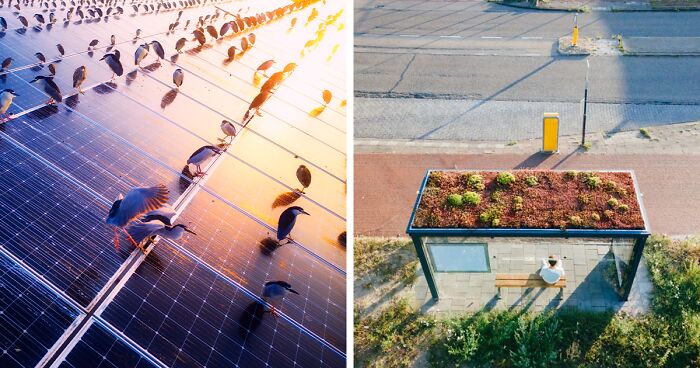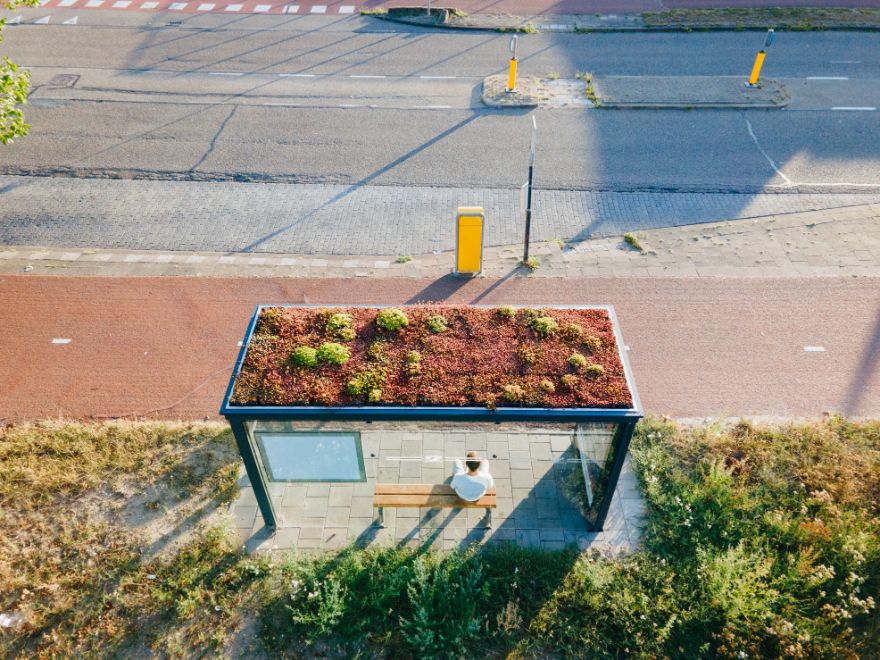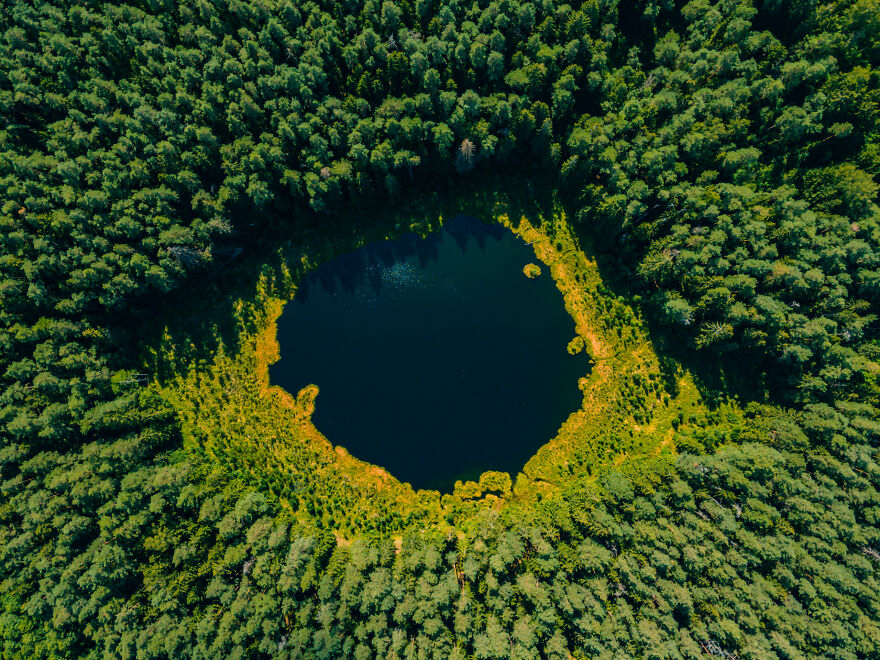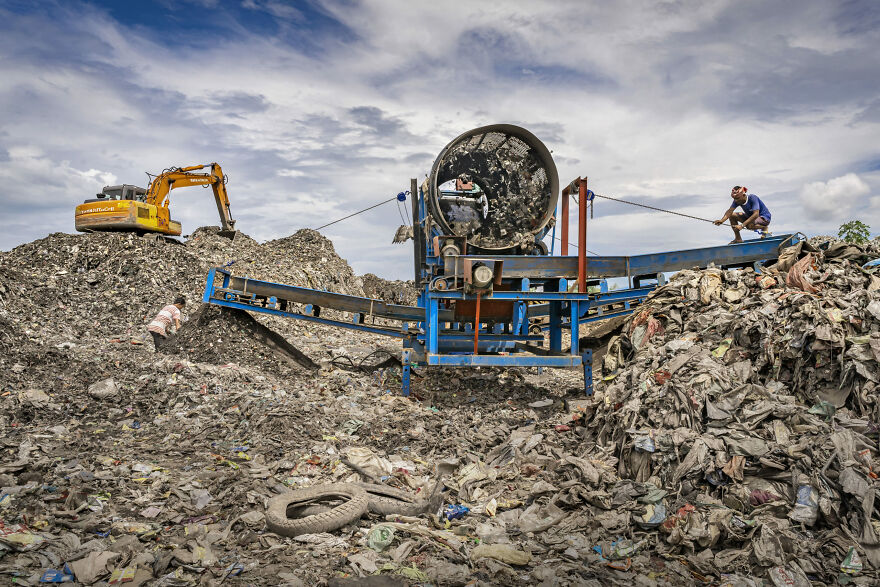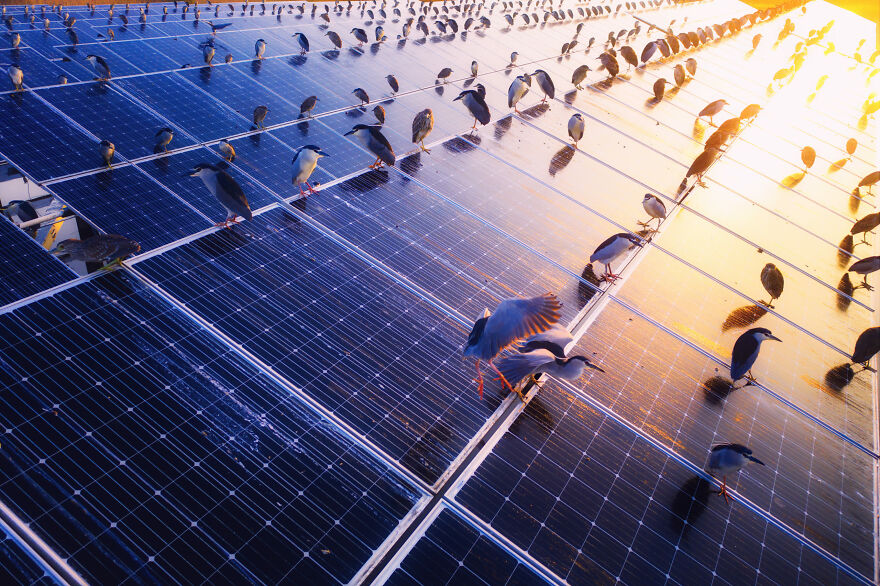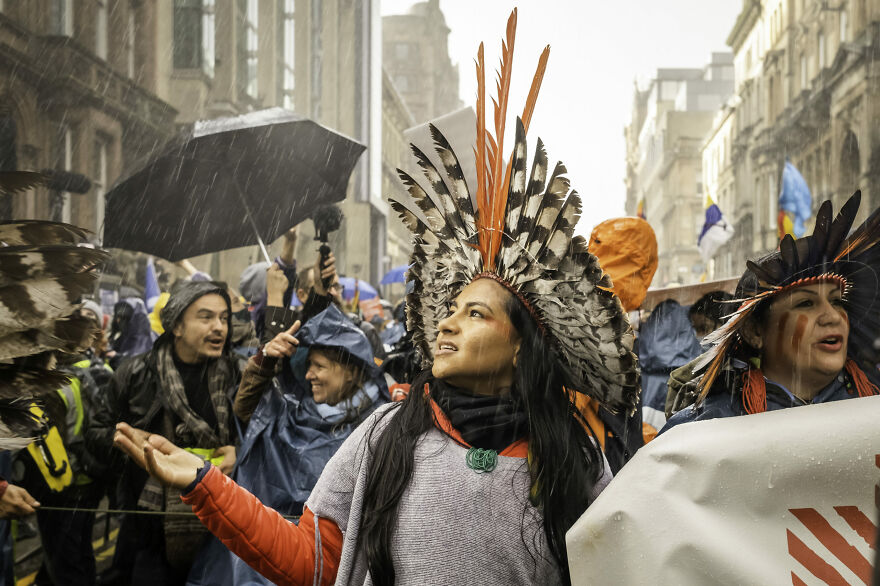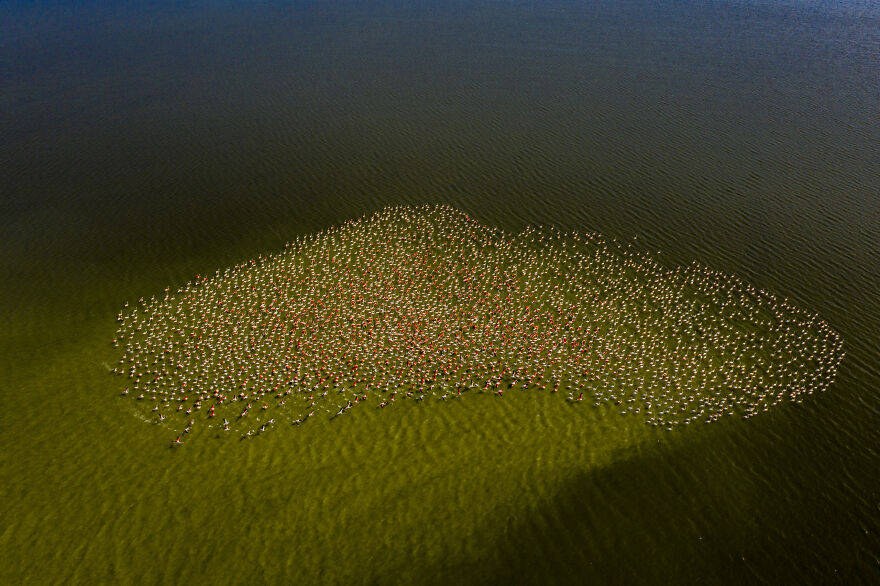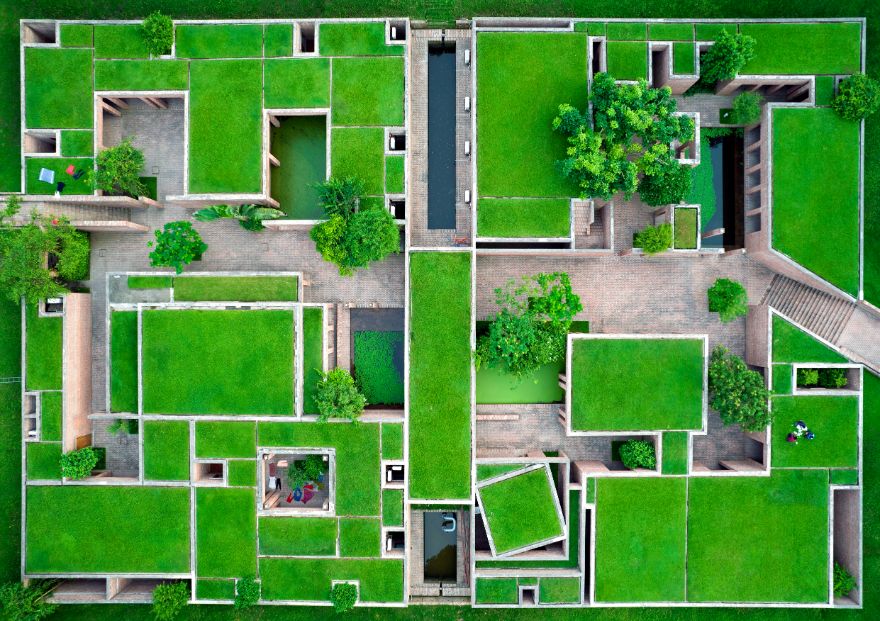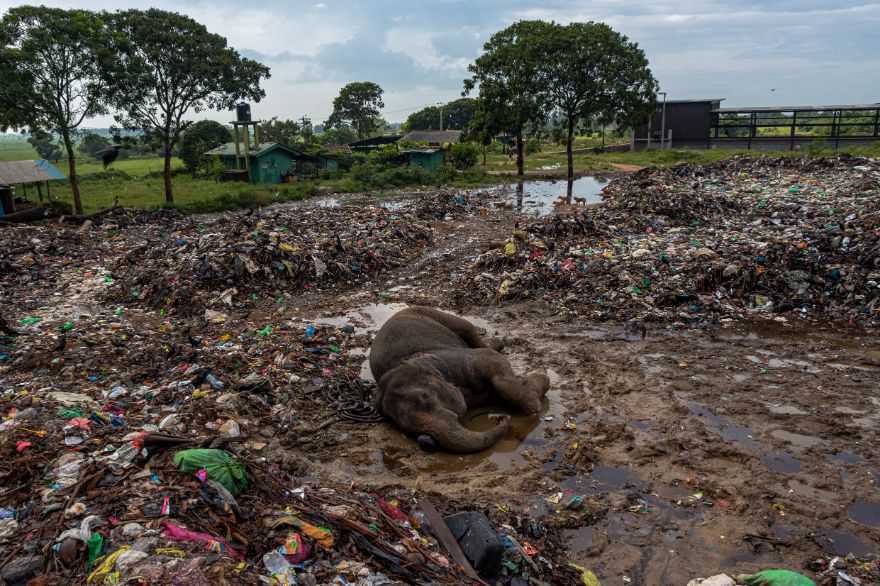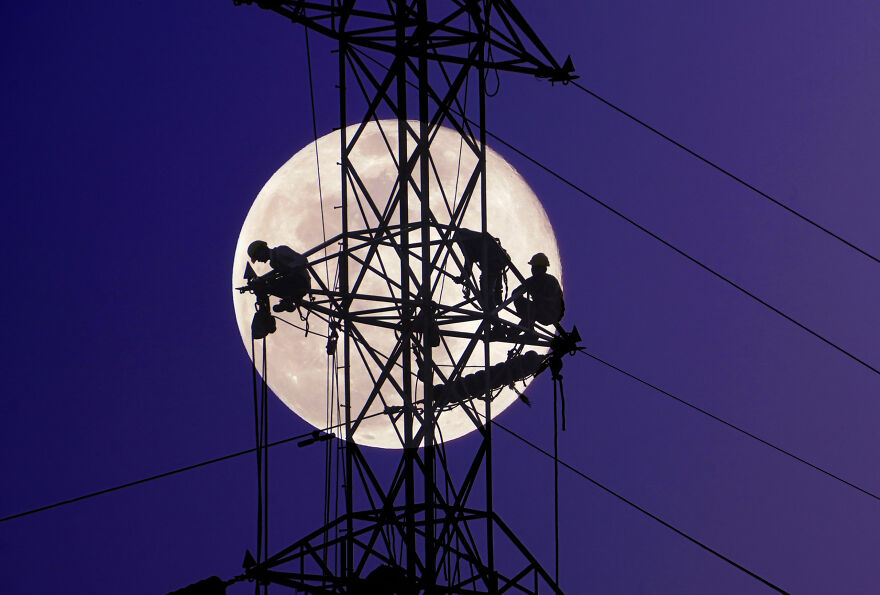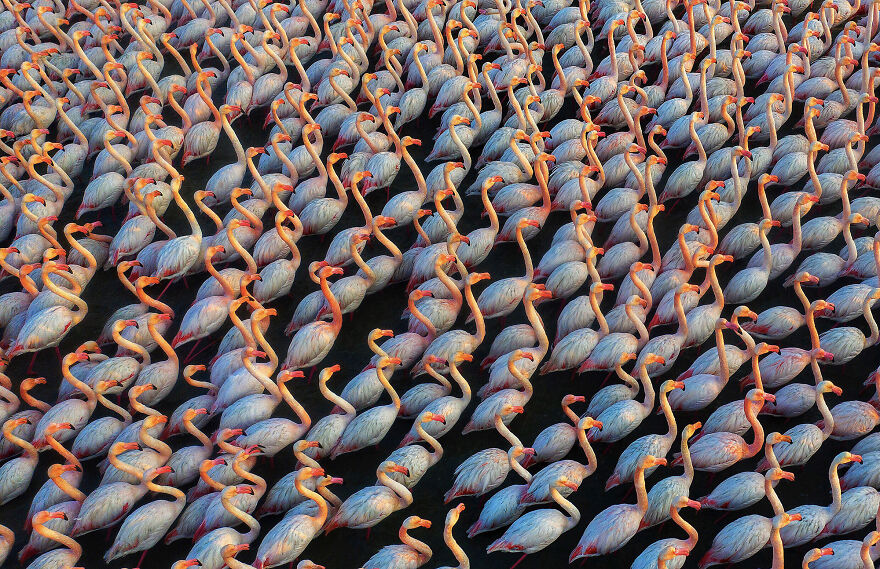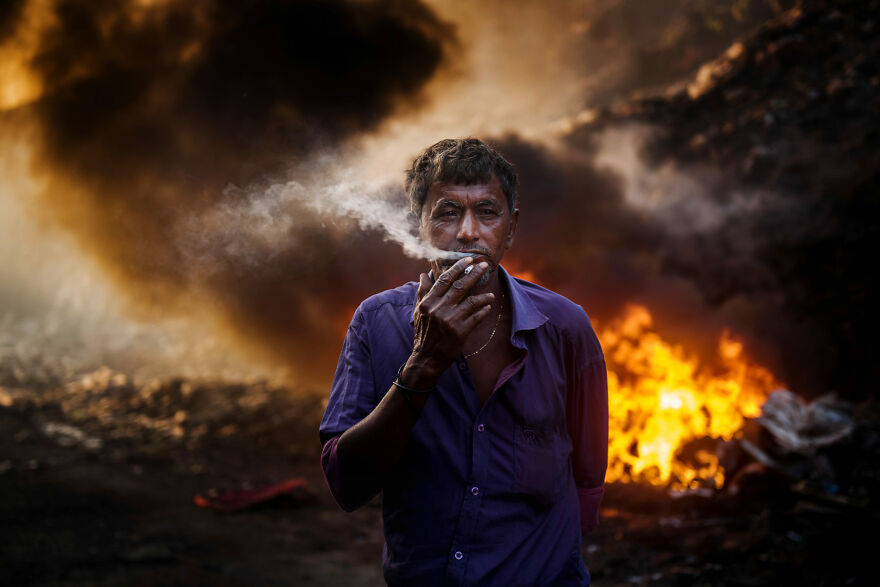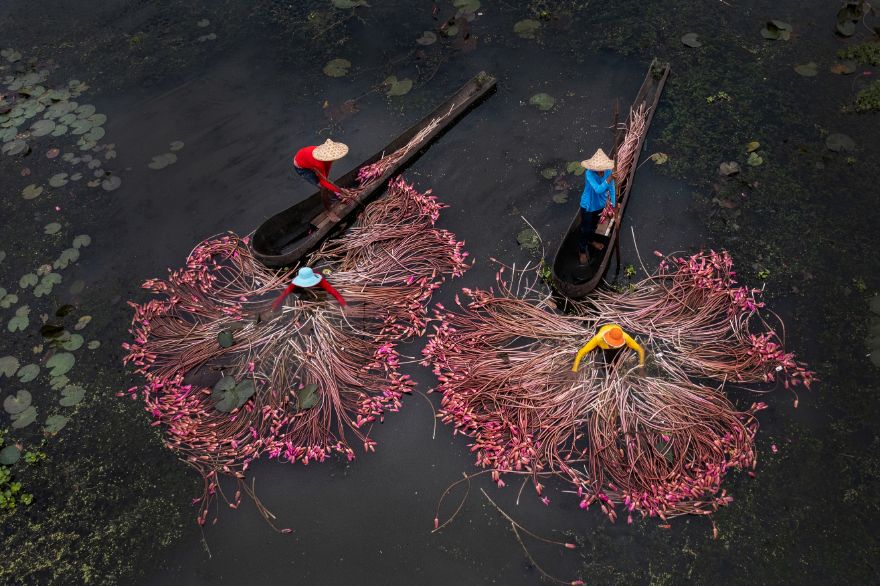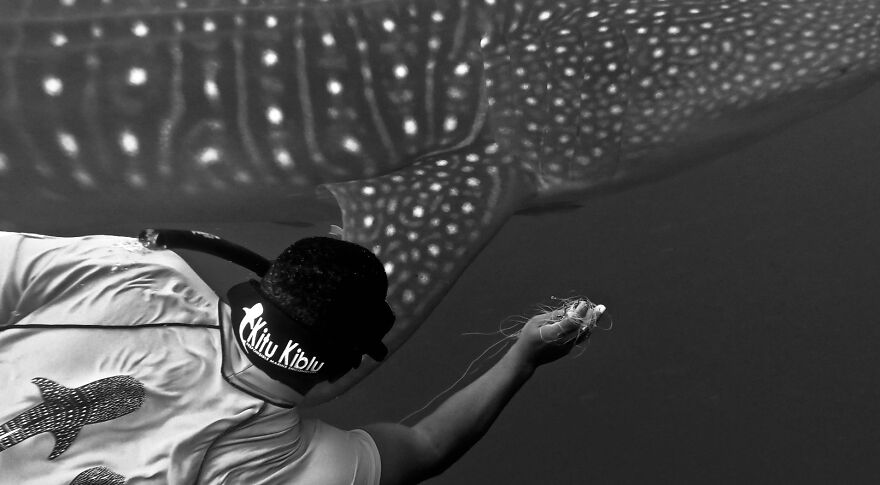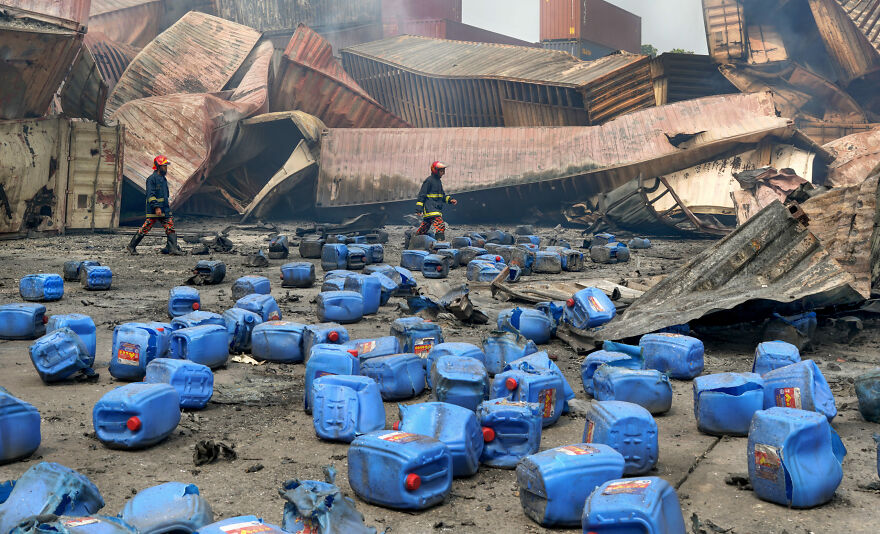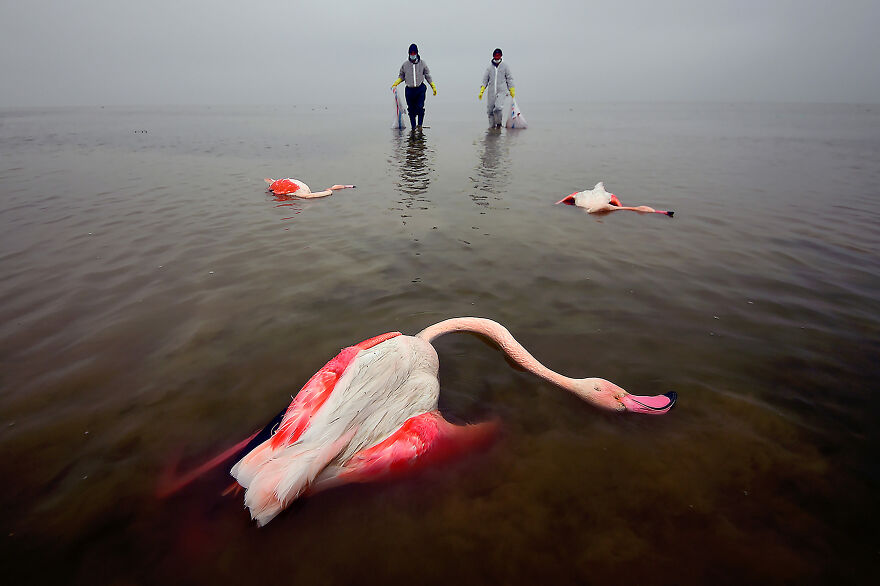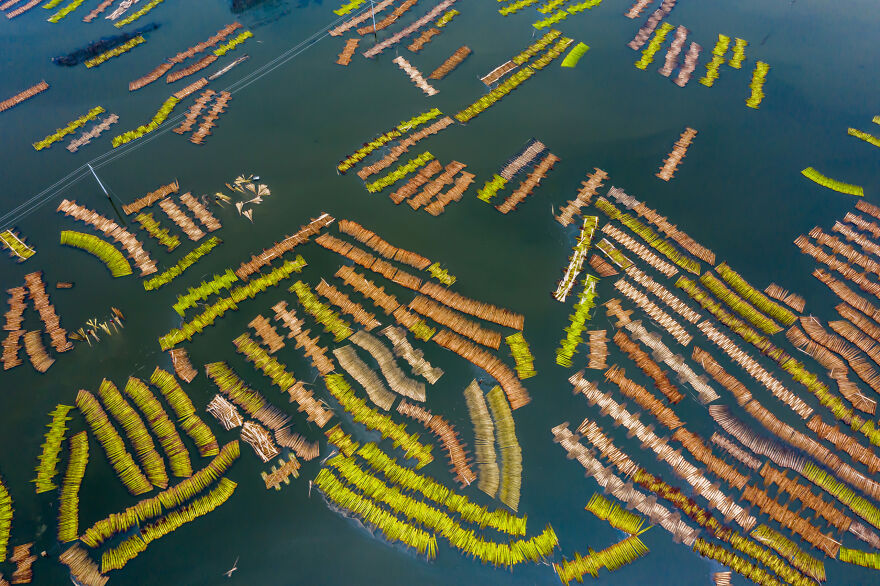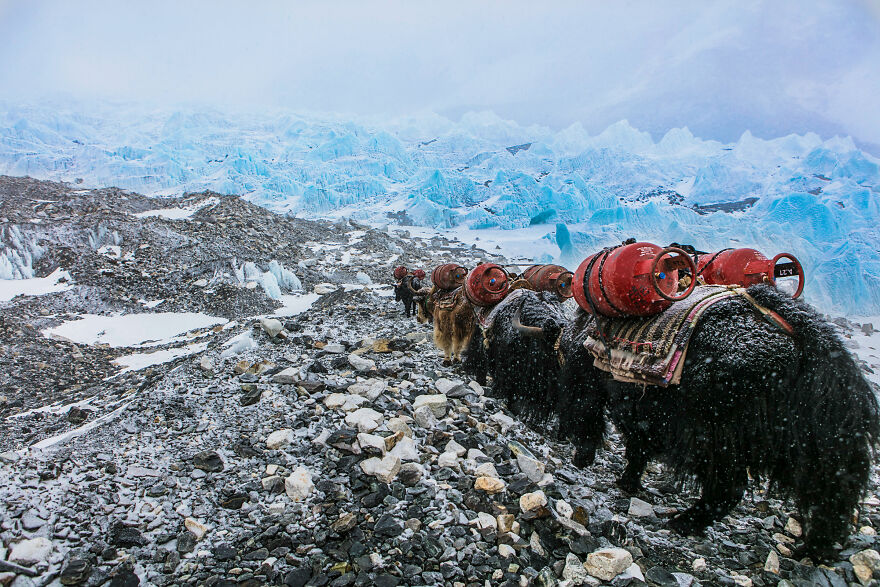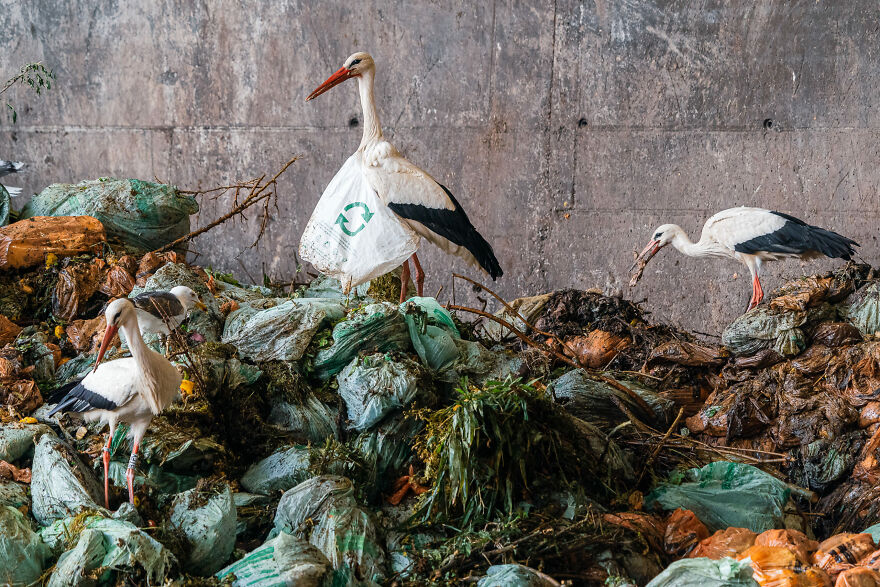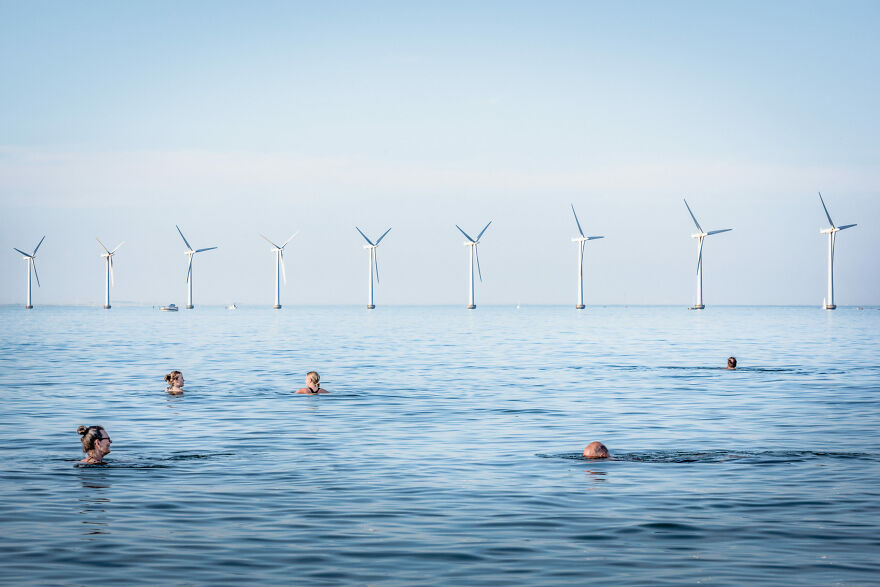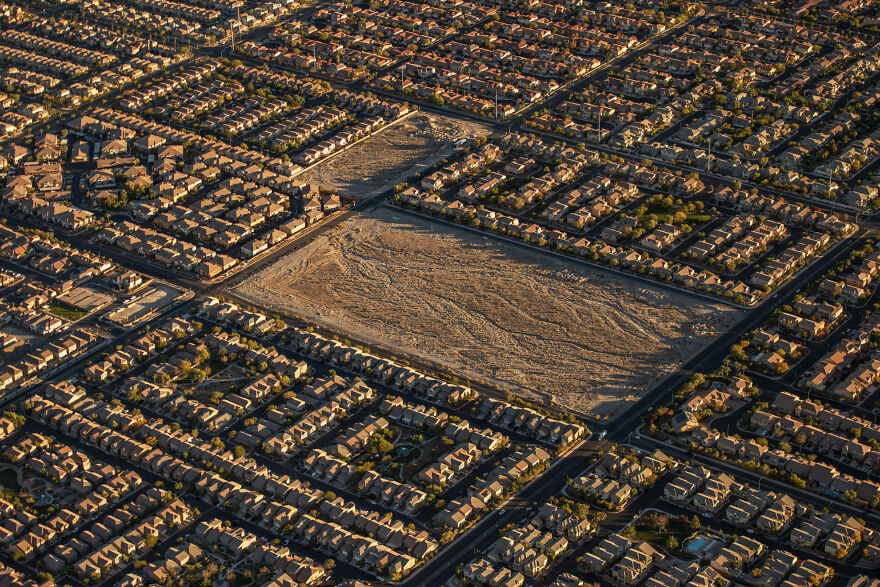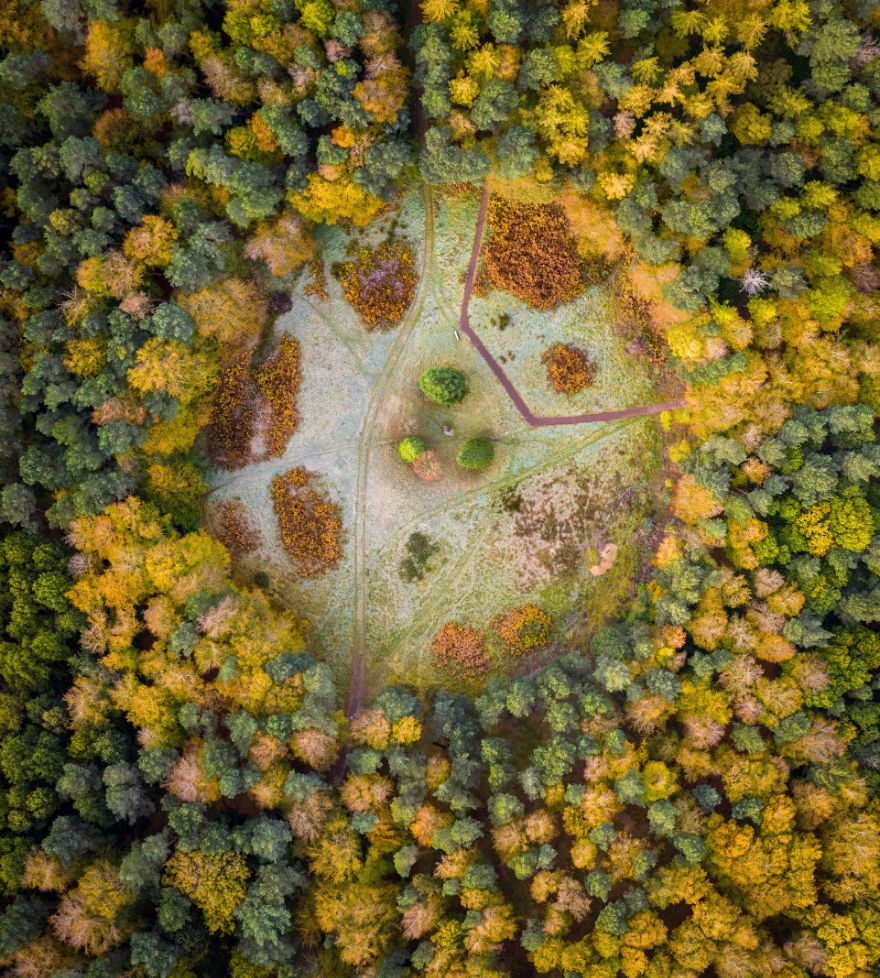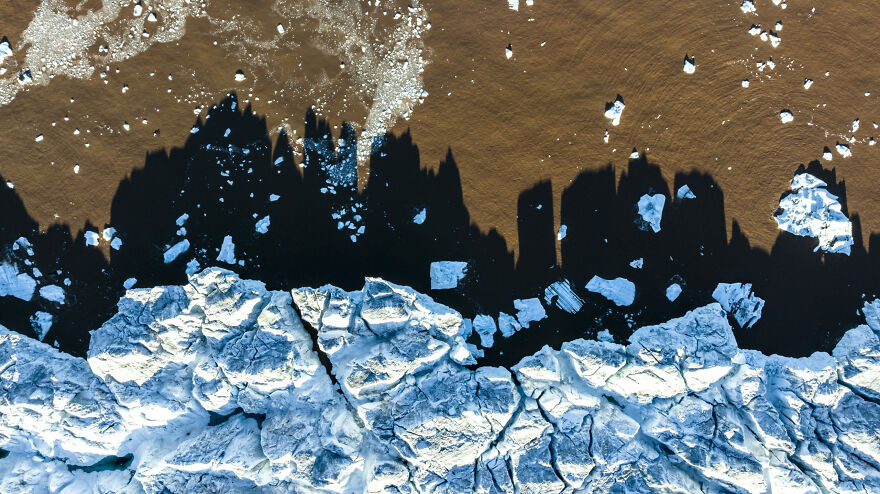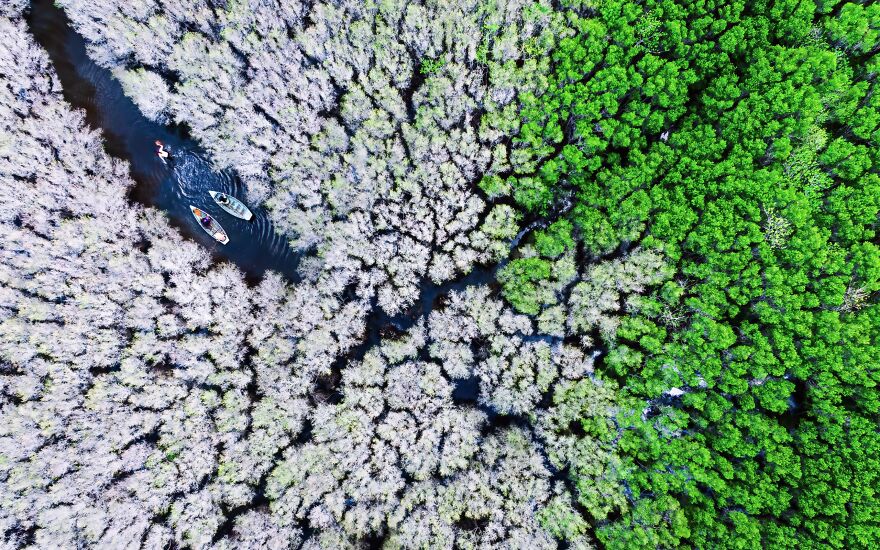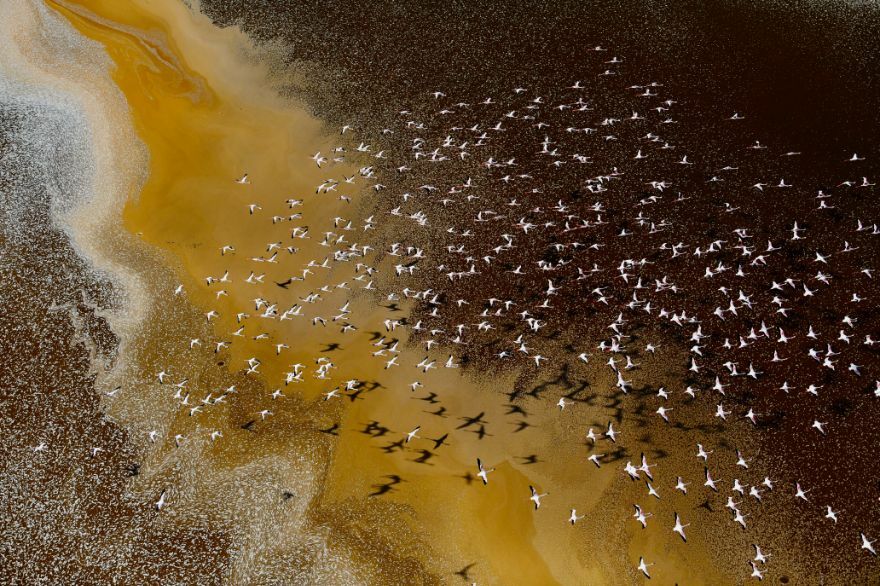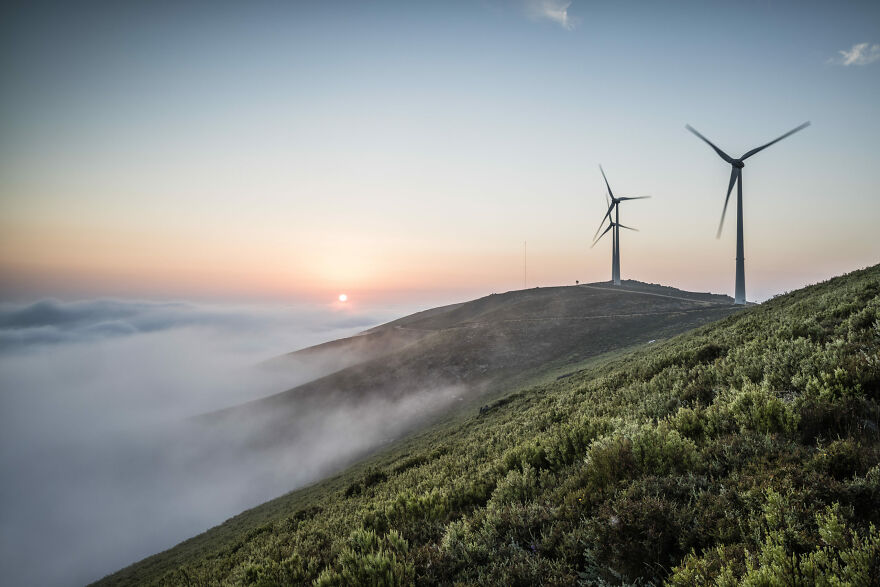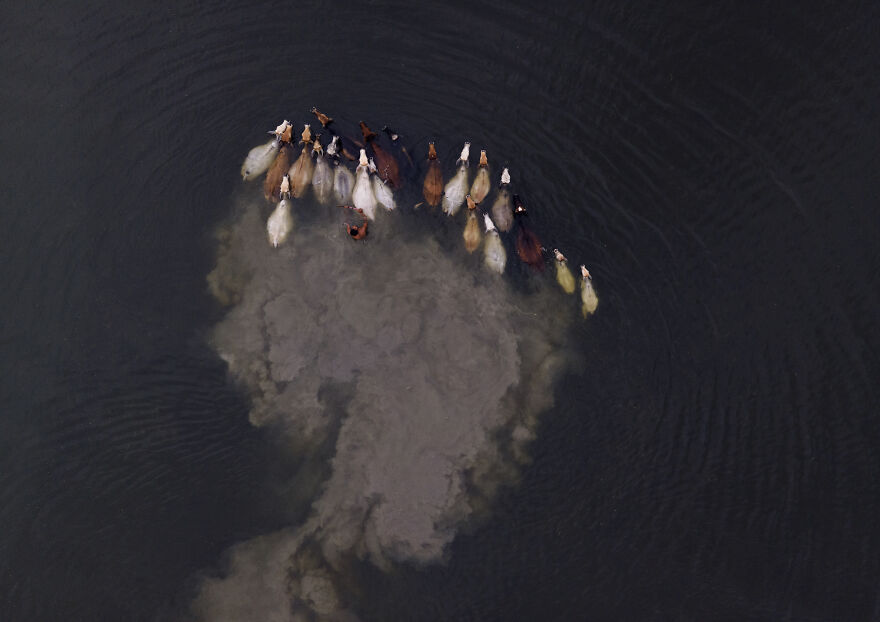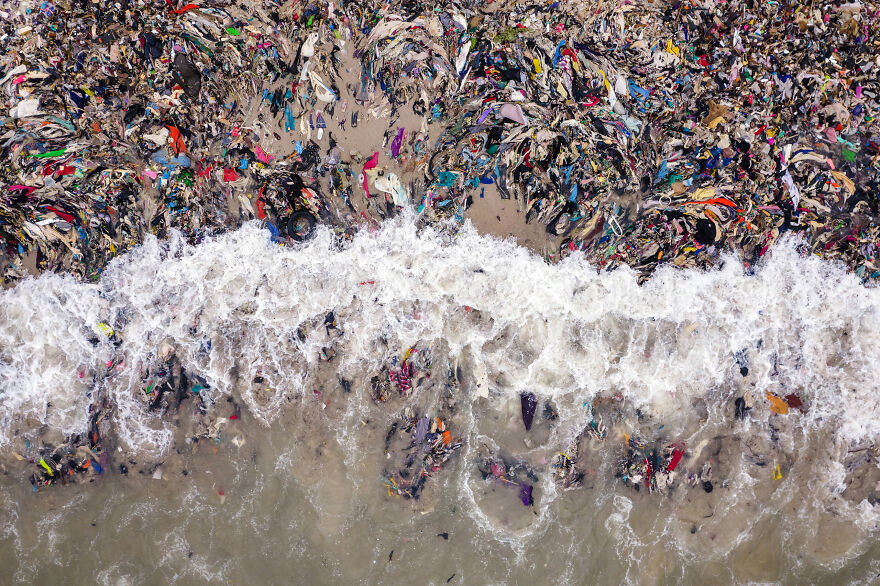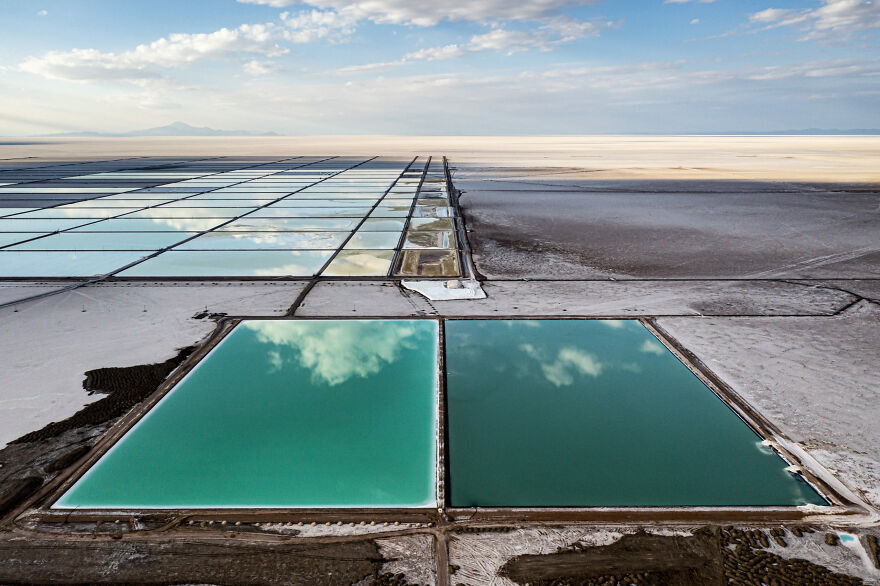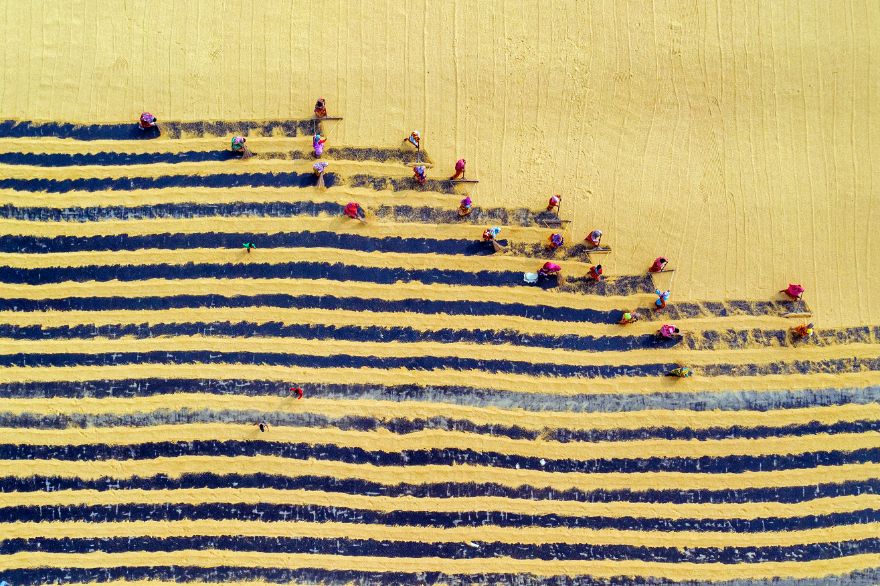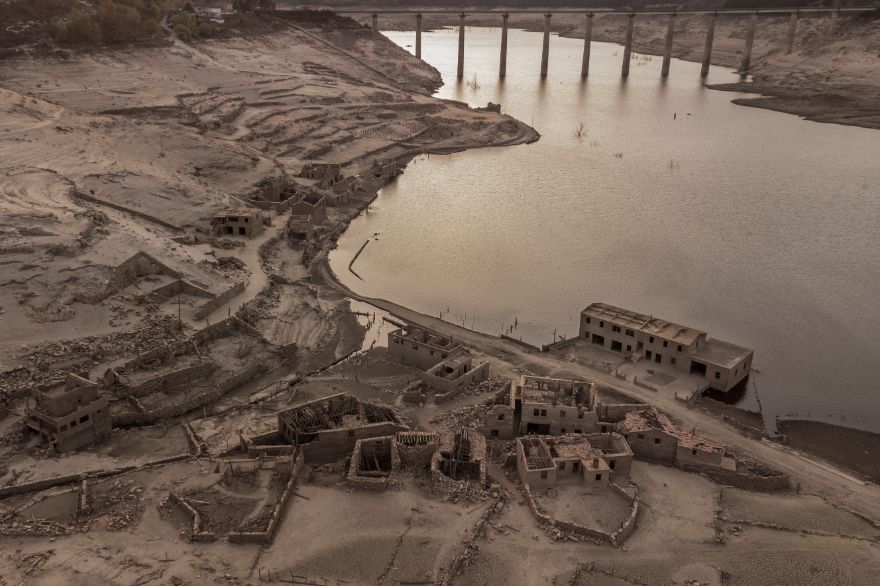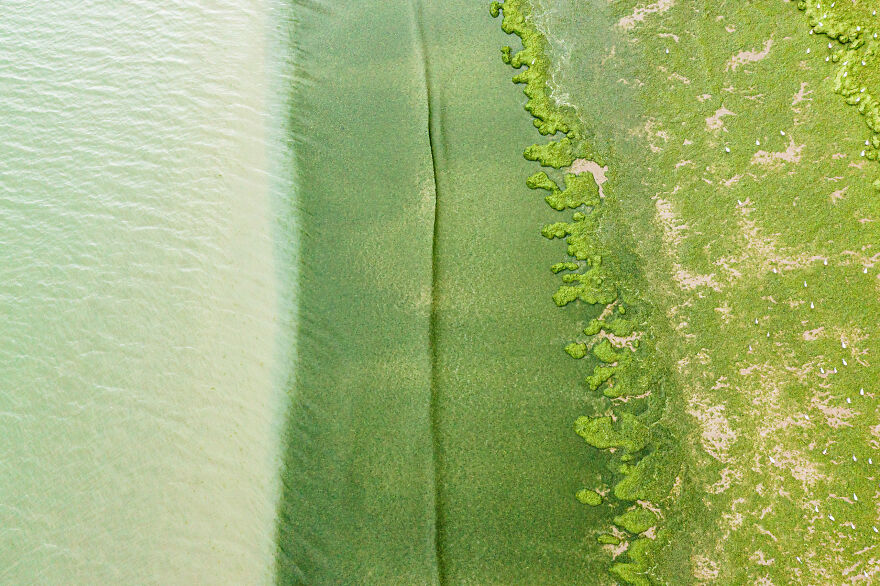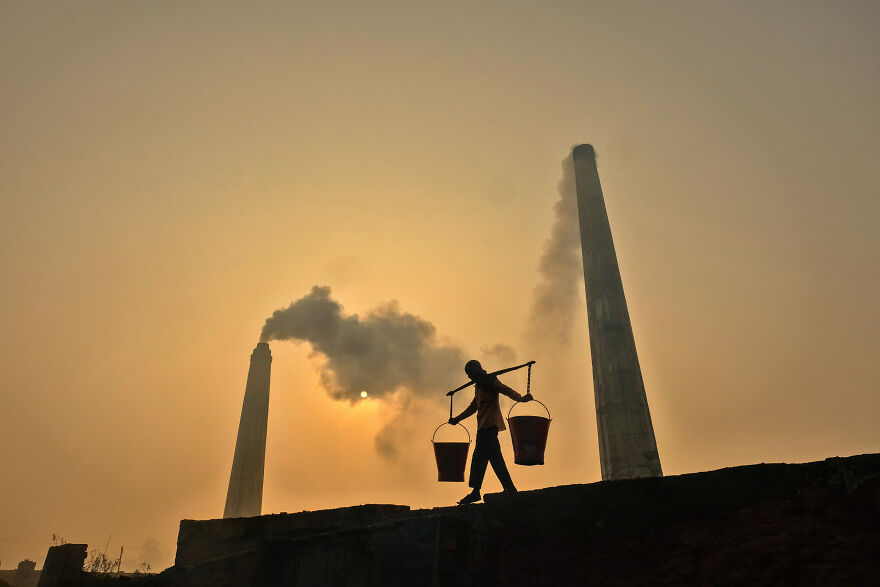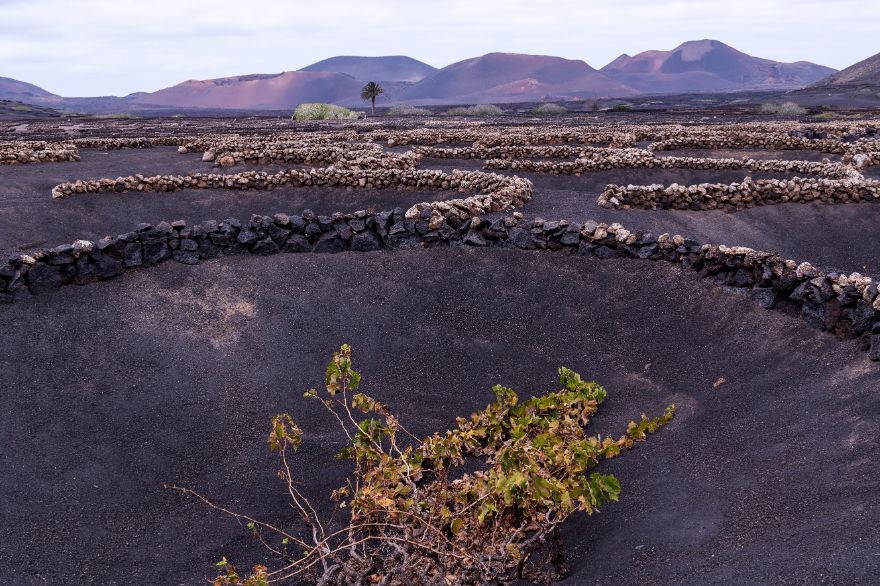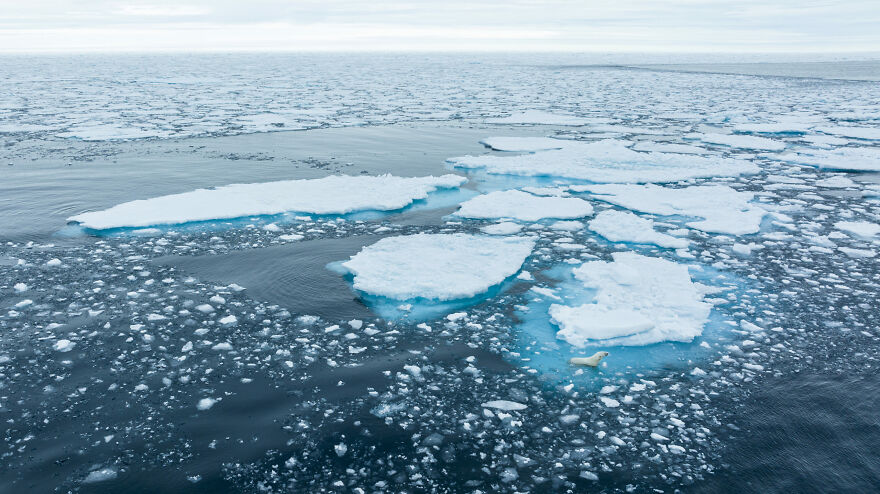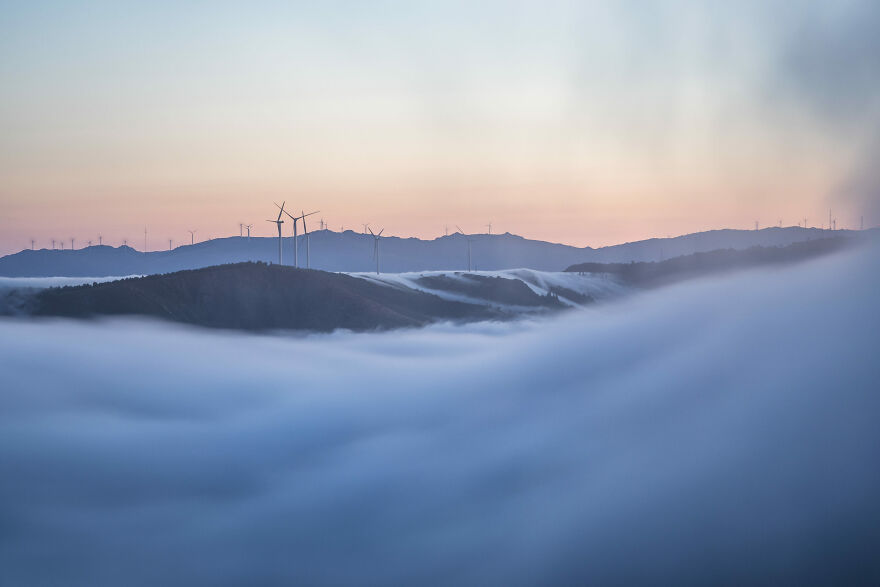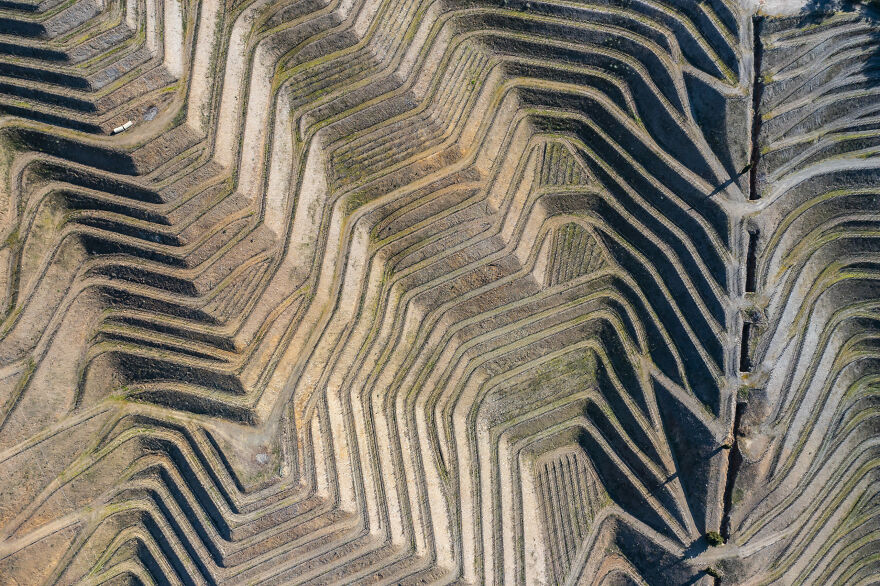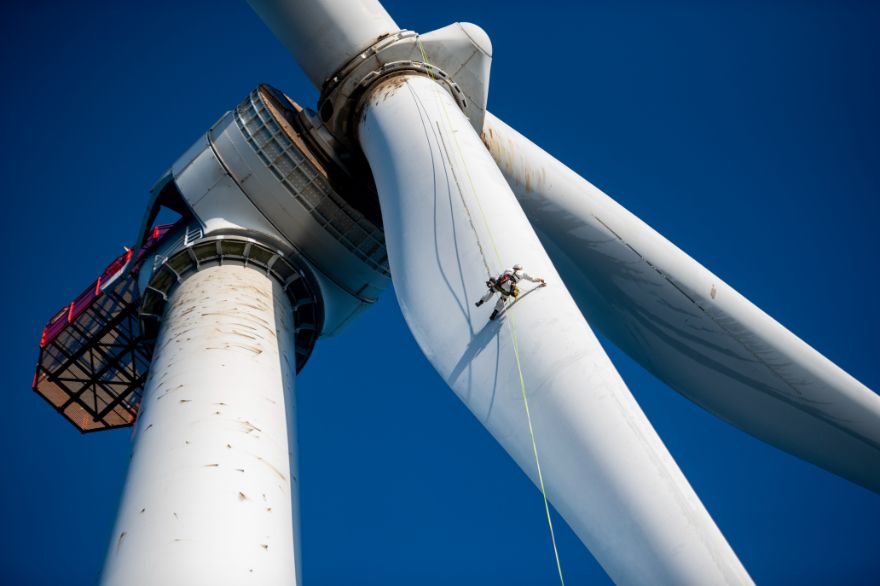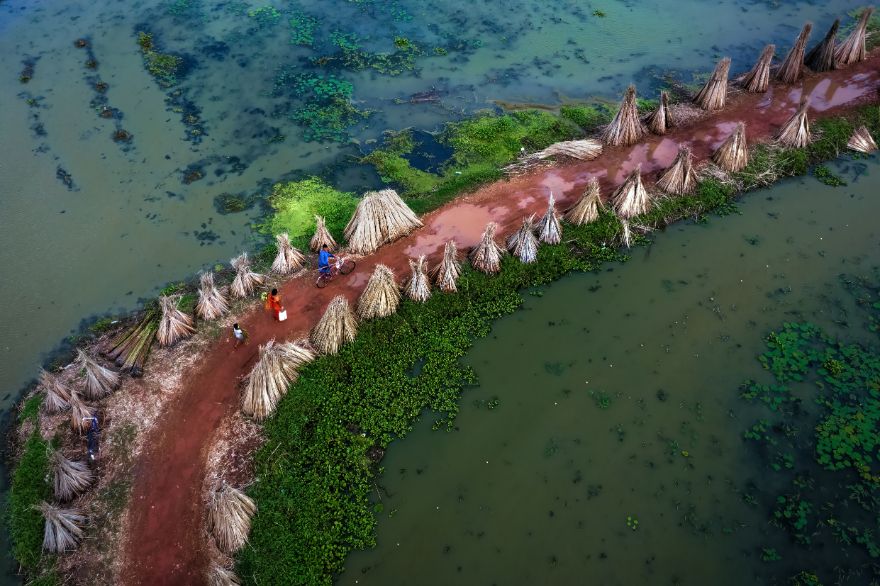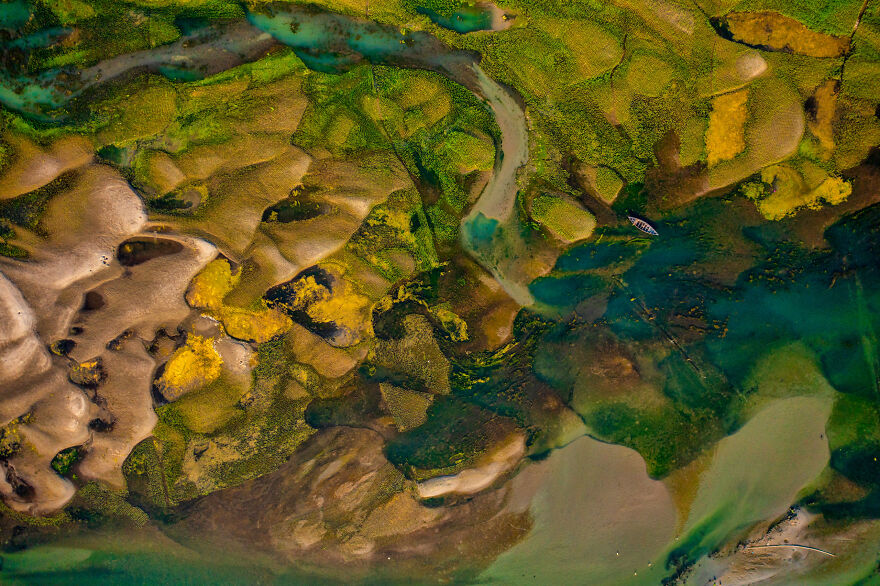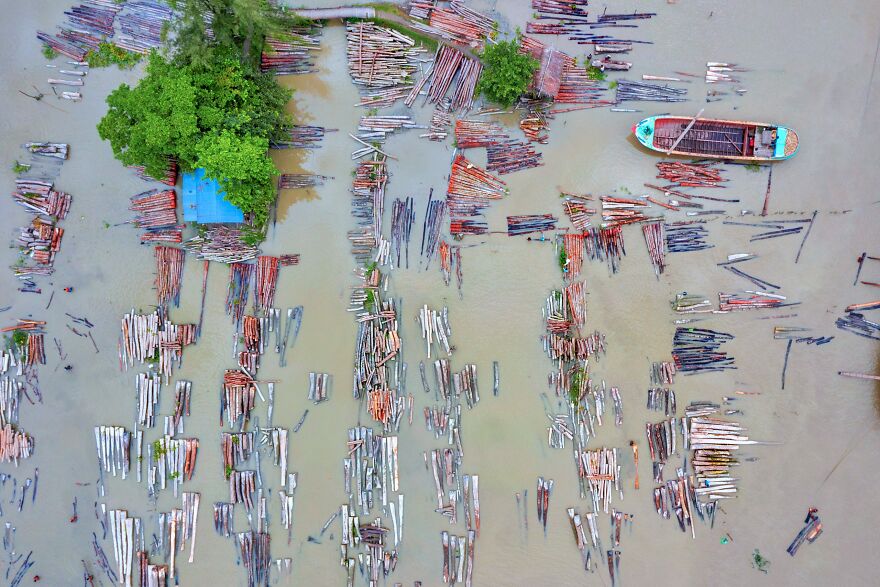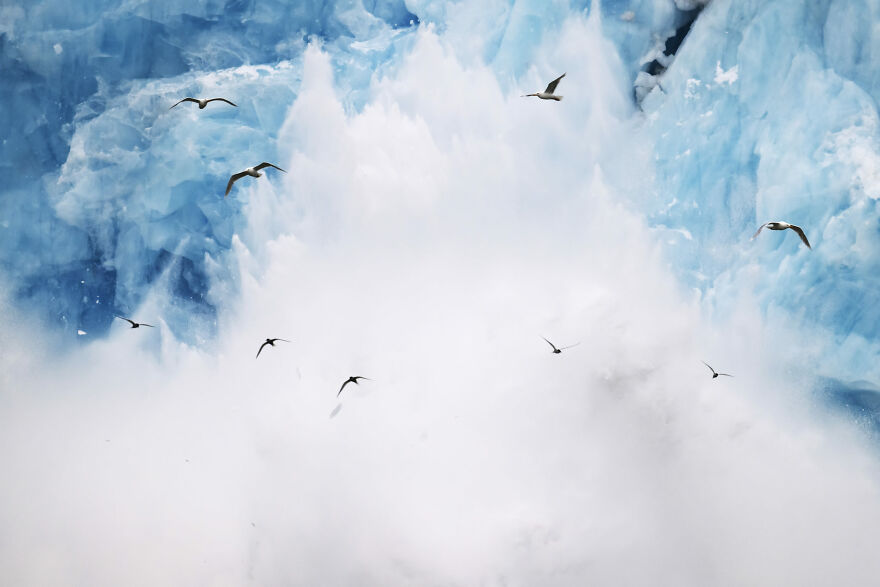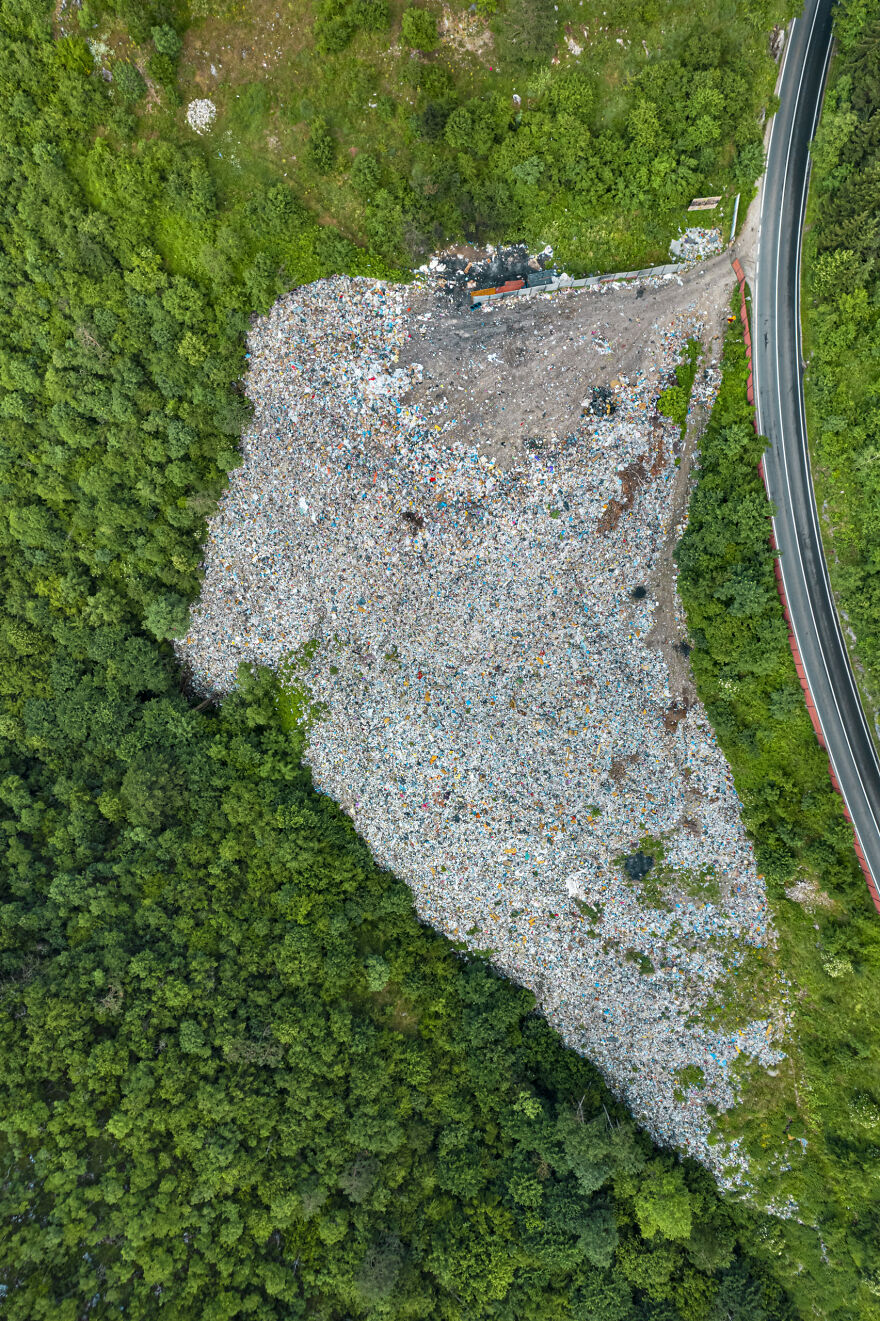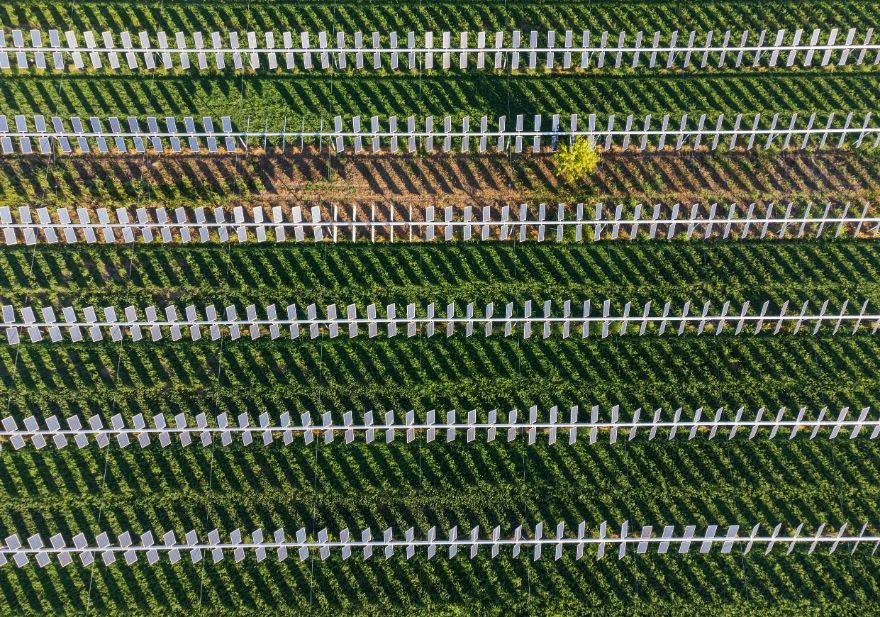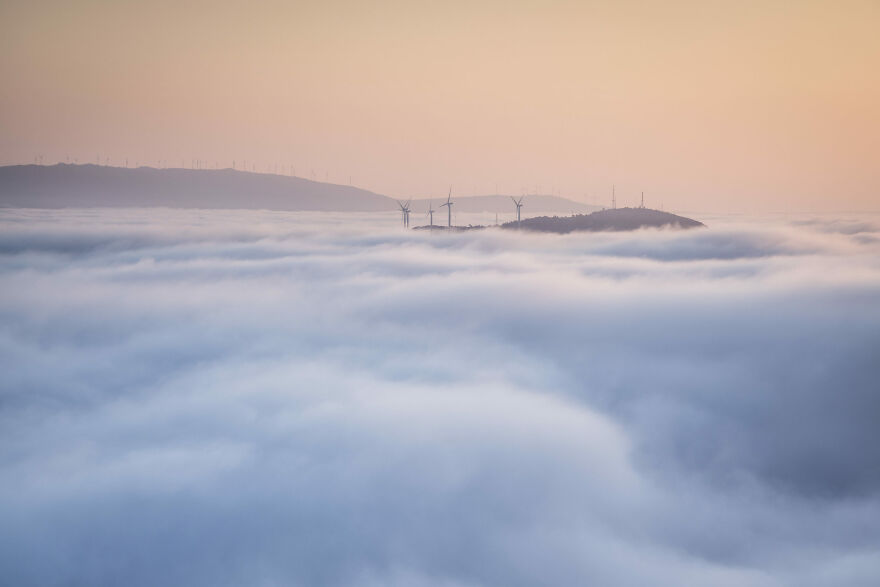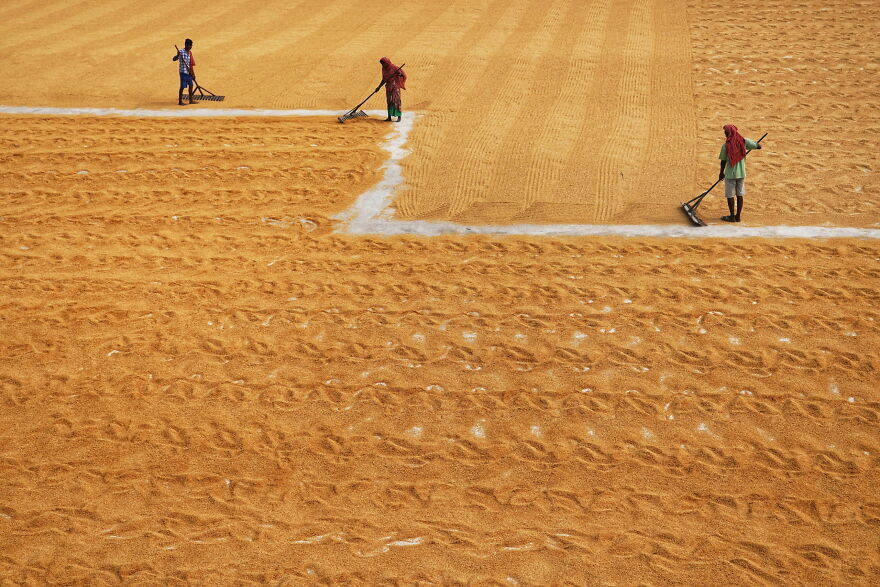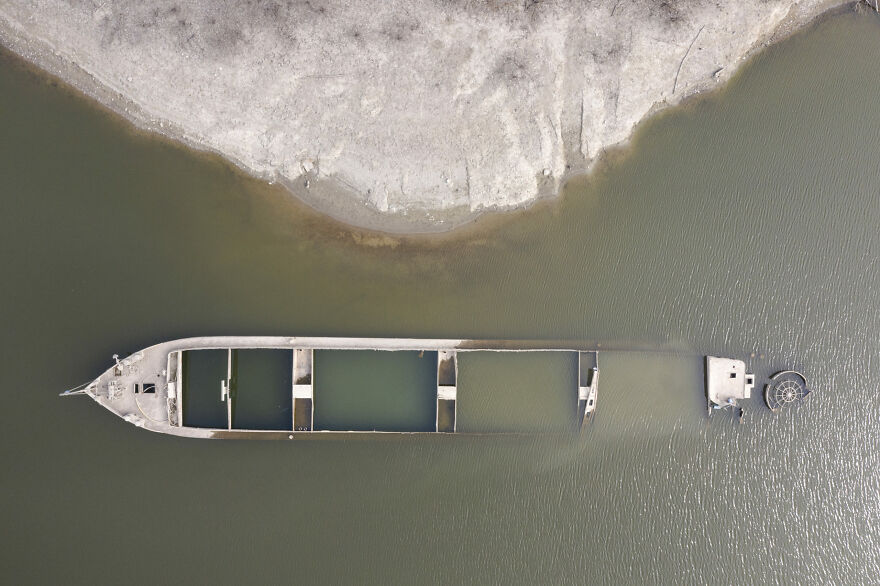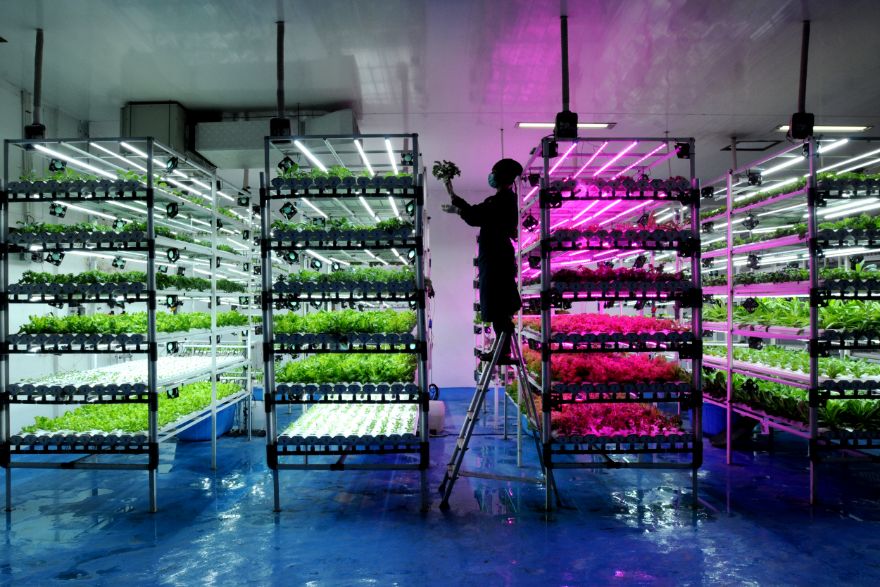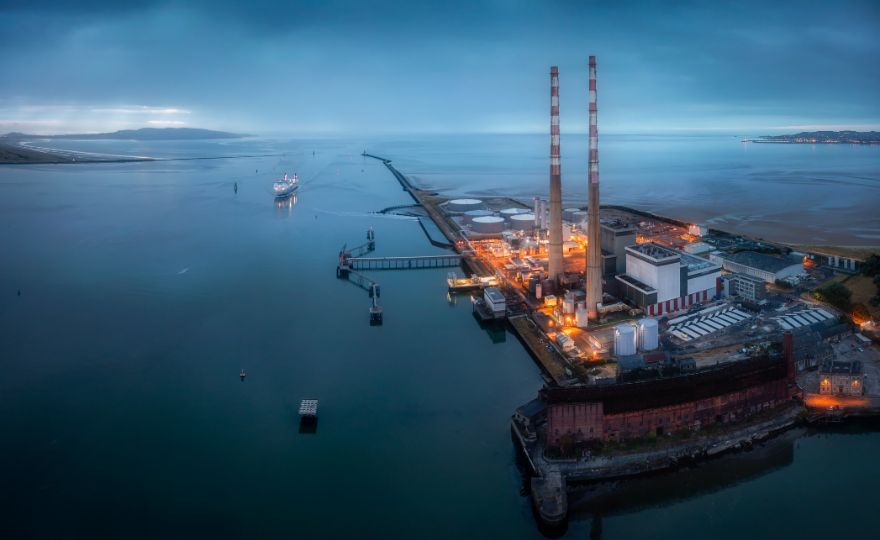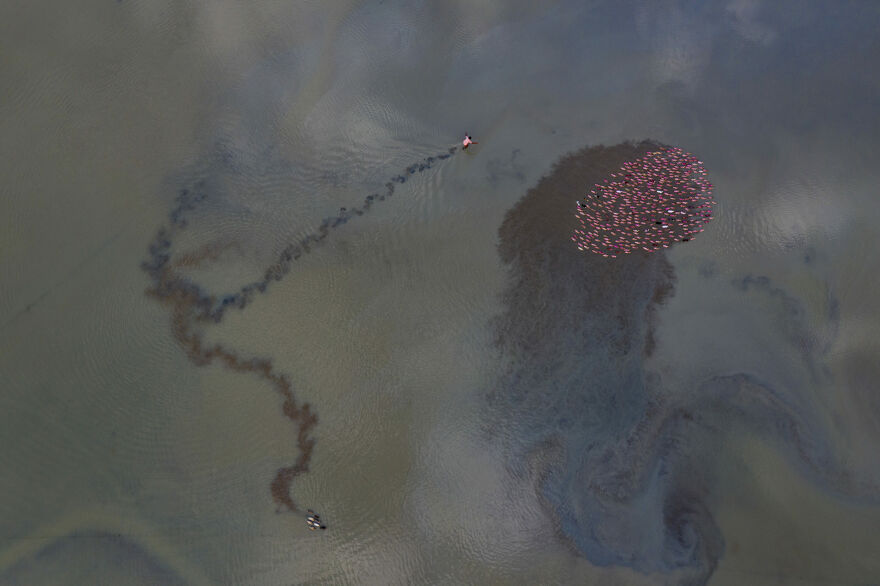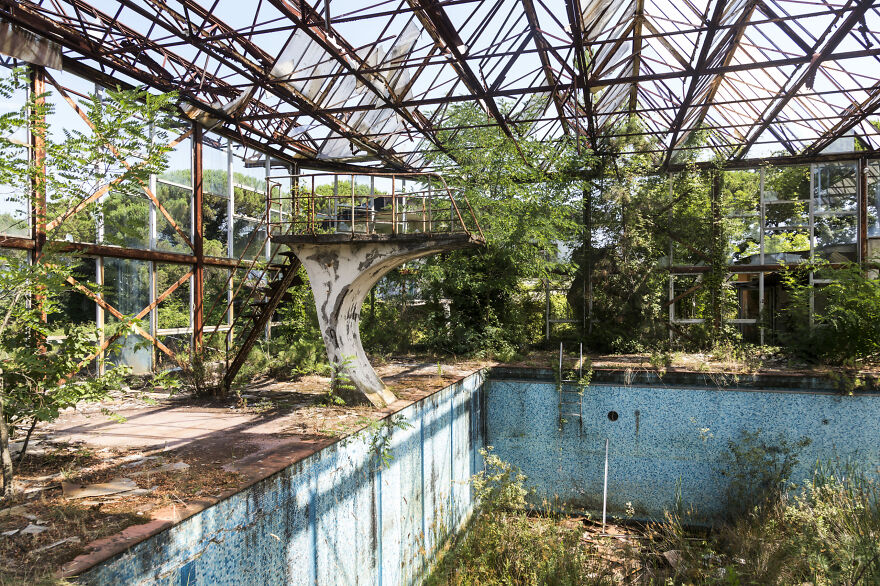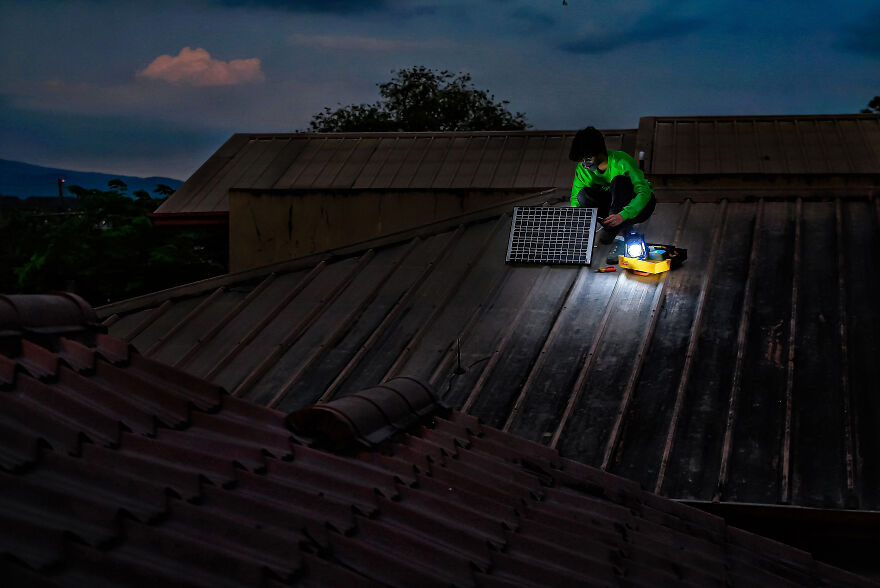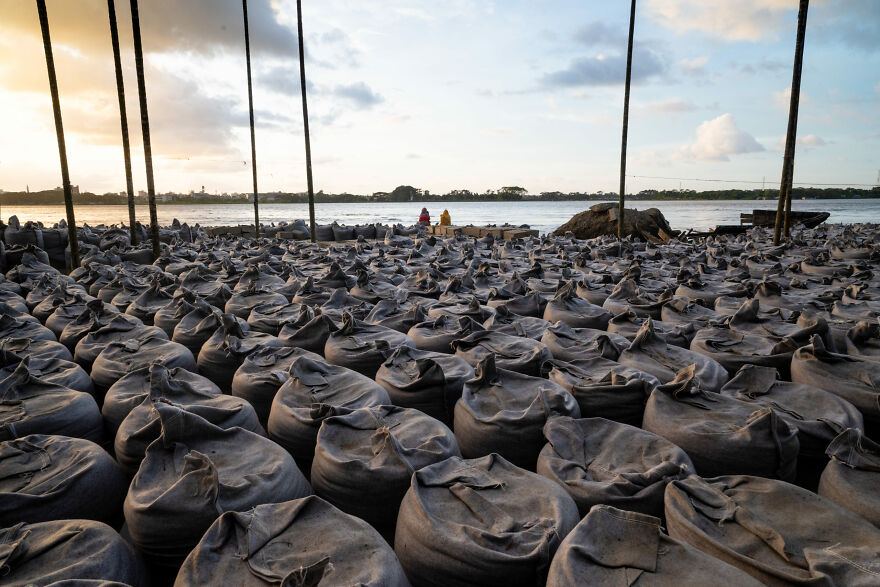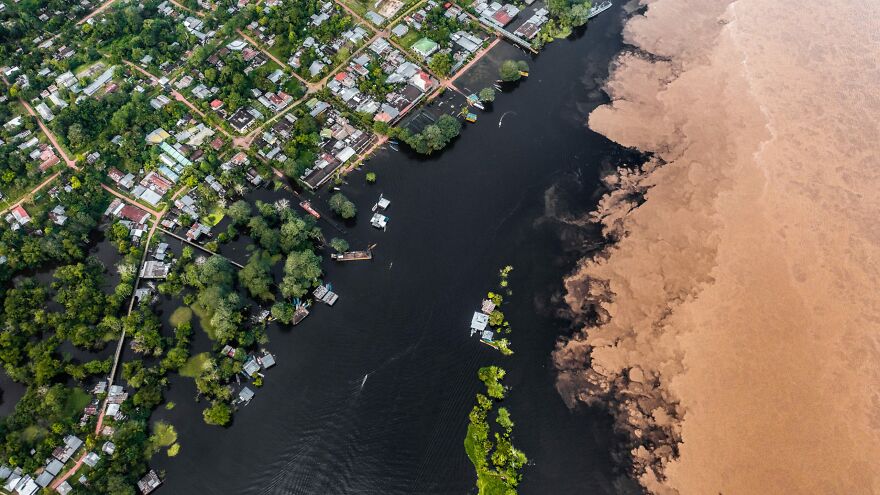Climate change is having a profound impact on our world, causing widespread destruction through events such as fires, floods, and intense storms. The ramifications of a changing climate are being felt globally, leaving many wondering what the future holds. Despite warnings from experts and advocates, it seems that many are still not heeding the call to take action and reduce their carbon footprint. Perhaps it will take more than words to drive home the urgency of the situation. Images of the devastating effects of climate change might be the wake-up call needed to inspire change and protect our planet.
Having taken place yearly for 15 years, the Environmental Photographer Of The Year (EPOTY) competition showcases some of the world’s most inspirational environmental photography, as well as "provides an international platform to raise awareness for the issues that put our planet at risk." Scroll down to see the EPOTY winners of 2022! If you're interested, check out the best shots of the 2021 contest here.
More info: epoty.org | Instagram | twitter.com | Facebook
This post may include affiliate links.
"Bee-Friendly Busstop" By Shamira Van Veenendaal, 2022
Utrecht, The Netherlands
"I took my camera and went out in my own city - densely populated with buildings, infrastructure and transport. Utrecht built 300 bus stops with sedum roofs to make the city more sustainable, clean and healthy. These bus stops can filter the air through the sedum, which improves the air quality. The green roof provides cooling on hot days and the plants collect rainwater that is slowly released back into the sewer so that there is less flooding during heavy rainfall. Combined, the 300 roofs increase biodiversity in the city, especially for insects such as butterflies and bees."
The title of the Environmental Photographer of the Year 2022 went to Mehdi Mohebi Pour for his photograph "The Bitter Death of Birds". 16-year-old Fayz Khan won the Young Environmental Photographer of the Year 2022 award for "Beautiful But Hostile Colours on Earth".
Additional winners were recognized in four categories:
- Vision of the Future: "Vertical Farming" by Arie Basuki, 2022
- Recovering Nature: "Naturalia: Chronicle of Contemporary Ruins" by Jonathan "Jonk" Jimenez, 2021
- Keeping 1.5 Alive: "Chemical Explosion" by Subrata Dey, 2022
- Adapting for Tomorrow: "New Ways To The Future (III)" by Simone Tramonte, 2021
"I'm Watching You Everywhere" By Maciej Krzanowski, 2021
Suwałki, Poland
"Photo shows a small lake hidden within the woods. The lake and its surroundings form a shape of an eye symbolizing that nature is looking into us constantly."
"Bio Mining With Trommel Machine" By Sujan Sarkar, 2022
Cooch Behar, India
"The decomposition of waste in city landfills causes air pollution and creates a high risk of producing methane under high temperatures, which can lead to a fire. To avoid these unwanted environmental hazards, the Municipal Corporation of Cooch Behar installed Trommel machines to bio-mine the solid waste.
The machine removes plastics, sand, metals, etc. from the garbage, which is then recycled and used for tarring, construction, etc. The other waste is converted into organic manure and growth stimulators. Biomining is a scientific process of excavation, treatment, segregation, and gainful utilization of aged solid waste. The machine helps to decrease landfills that accumulated over around 50 years."
This is an excellent invention, I wonder how many of these are actually in use.
Bored Panda got in touch with Marieke Muller, the External Affairs Senior Executive at the Chartered Institution of Water and Environmental Management, to get to know more about the EPOTY competition. Firstly, we asked about the criteria the judges were following when selecting the best shots. Marieke shared that the jury used three main criteria to determine their initial scores and to guide their joint discussion. "Each of the criteria contained multiple building blocks, which we broke out into questions to prompt a careful review from the jury:
- Idea – judged by a combination of: story, creativity, and relevance;
- Execution – judged on technique and difficulty;
- Impact – judged on the first vs the second impression, and translating the idea into a visual."
"Home Of Night Herons" By Gu Guanghui, 2021
Ninghai County, China
"This solar power plant along the coast of Zhejiang Province is a protected area. Because there is no human interference, it has become the home of birds. The project combines underwater fish breeding and surface power generation. The ecological environment is good, attracting a large group of night herons to live on the photovoltaic panel, where they live and breed."
"One With Nature" By Bernard Kalu, 2021
Glasgow, Scotland
"People join in the protest to inspire action to mitigate the looming climate crises. I am Nigerian and was one of the designated observers representing my country in COP26. There were myriads of photographers and videographers there as all the people marched in protests."
a very expressive picture. i love how the rain is joyfully accepted here. (water means life). the question about the origin of the feathers would be justified, if people without tribal background would wear them simply for fun or decoration. then one would also speak of cultural appropriation. on this picture you can see that this person wears headdresses corresponding to their culture, which were made in a traditional way. see also the insightful comments by JB and UpupaEpops .
According to Marieke, most of the photos were submitted by emerging photographers new to this work. "On the winning photo ('The Bitter Death of Birds') specifically, jury member Daisy Gilardini commented: 'I found this image particularly touching due to its stillness. Contrary to one of the basic rules of photography - the rule of thirds, which suggests placing your subject in one of the thirds - the photographer decided to frame all the elements right in the center. By doing this, the immediacy is even more poignant.'"
"Art Of Flamingos" By Lalith Ekanayake, 2022
Gulf of Mannar, Sri Lanka
"A flock of flamingos wades through the algae-rich waters in a dark muddy lagoon, which is almost black. I flew the drone a few kilometers into the lagoon about 200 meters above sea level with zero disturbance to the flock.
Greater flamingos (Phoenicopterus roseus) migrate to Sri Lanka, mainly on the north and north central coastal lines and lagoons. They feed on algae-rich waters and shrimps, which used to be abundant but shrunk rapidly due to human invasion. It was a surprise that the flamingos arrived this year in large numbers, as they were gradually declining over the last few years."
Great photo. Even nicer when I read it was filmed by drone without disturbing the birds.
"Environment-Friendly Construction Under The Ground" By Md Shafiul Islam, 2022
Gaibandha, Bangladesh
"We have to think creatively to survive extreme temperatures and adverse weather conditions. The Friendship Center in the Gaibandhar district is an exceptional establishment. Built in 2012, the facility is underground. There are small ponds and trees to keep the environment cool. The roofs are covered with green grass, so the rooms remain cool. Its architect, Kashef Mahbub Chowdhuri, has received the Aga Khan Award for Architecture from Switzerland."
Aga Khan is the Bangladesh equivalent of Chaka Khan. I think. Edit for spelling. Thank you A. Starhawk Hunt!
To a question about how this year's submissions are different from the previous competition, Marieke answered: "we had a new set of categories this year, which always prompts new topics. Generally, we saw an increase in positive and hopeful stories charting possible solutions to some of the issues the world is facing. We also moved the earliest date for photos to be taken up to the start of 2021. This meant we received a lot of photos telling stories that had recently been in the news, with some photos showing the droughts that hit large parts of the northern hemisphere in the summer of 2022, and we received a significant number of photos depicting the flooding in South Asia."
"Tears" By Easa Lebbe Muhammed Jamsith, 2022
Oluvil, Sri Lanka
"The elephant was unable to stand up, writhing in pain. The employees of the garbage dump helped until the arrival of the wildlife officials, the park officials, the wildlife organization Wildlife and Naturerotection Society Sri Lanka, and the Wildlife and Nature Protection Society. They reached the spot within 3 hours along with a wildlife doctor. Elephants can become addicted to the many types of food found in the rubbish. When those elephants smell food it doesn't matter if it's wrapped in paper or covered in polythene, they swallow everything. After that the waste gets trapped in the elephant's stomach and causes a very painful death for the elephant without being digested."
"People At Work" By Jignesh Chavda, 2021
Ahmedabad, India
"A group of electricians repairs a power line in the late evening after a cyclone hit the city."
"An Army Of Flamingos" By Mehdi Mohebi Pour, 2022
Miankaleh, Iran
"In 2019/2020 and 2020/2021, thousands of birds died in the lagoon, and in the next year, 2021/2022, fortunately, we saw the return of birds.
The birds are in the wetland from the beginning of October to the end of March and after that, they migrate. The birds were our guests at the end of 2021 and the beginning of 2022, and this story is repeated every year. In 2020/2021, tens of thousands of migratory birds died in this wetland, and in the following year (2021/2022), the flock returned."
"The Pollution Crisis In Bangladesh" By Kazi Md. Jahirul Islam, 2022
Chittagong, Bangladesh
"People start fires in garbage dumps to find the iron pieces that remain, which they can sell on the market. The burning plastic generates smoke and gas. I often go to this garbage dump to take photos.
This man collects different kinds of iron pieces or breakers from the garbage heap to sell them. Air pollution in Bangladesh is the worst in the world, reducing the average Bangladeshi life expectancy by 6.7 years. Another study estimates there were 24,000 premature deaths as a result of air pollution in Bangladesh."
"Lilies Of Bengal" By Sandipani Chattopadhyay, 2022
Nabadwip, India
"Local villages collect flowers to sell at the market: red lilies are used for home decorations and in vegetable curries. Wild blooms of red lilies were rare in India, they need humid and fresh monsoon water to bloom. Due to adequate rainfall, the bodies of water are recovering, so over the last few years, red water lilies are visible during the monsoon. Nature is slowly recovering and red lilies are the evidence of the same."
"Papa Potwe, 1." By Danielle Stanley, 2021
Mafia Island, Tanzania
"Ali has been working at Kitu Kiblu for over 8 years and has learned to respect these gentle giants. This photograph was taken after many attempts to remove a hook and fishing line from the mouth of a Whale shark. Although a small fishing line doesn't encompass the greater issues of unsustainable fishing industries, it represents the power of conservation to bring about positive change through nature-based solutions, specific to conservation."
"Chemical Explosion" By Subrata Dey, 2022
Sitakunda, Bangladesh
"A chemical explosion and fire at BM container depot Sitakunda upazila of Chittagong on 4th June 2022. 49 people were confirmed dead in the blaze, and the mixing of chemicals in the air and water has a devastating effect on the environment. The explosion at the depot spilled plastic containers into the nearby river, where the chemical-laced water entered the aquifer and destroyed the freshwater supply."
And in a move that can only end badly, Bangladesh is building a nuclear reactor.
"The Bitter Death Of Birds" By Mehdi Mohebi Pour, 2021
Miankaleh, Iran
"In 2019/2020 and 2020/2021, thousands of birds died in the Miankala lagoon due to lack of water and its contamination with various toxins. This photo shows the efforts of the environmental forces to collect the bodies and prevent the spread of this disease.
In the next year, 2021/2022, fortunately, we saw the return of birds. The birds are in the wetland from the beginning of October to the end of March and after that, they migrate and we can photograph them for almost 6 months of the year."
"Ecofriendly Jute Processing" By Ahsanul Haque Nayem, 2022
Natore, Bangladesh
"Patterns are created on the calm surface of a lake during the first step in the extraction of soft jute fibers, as sliced-up plants are soaked in water for about 15-20 days. The water makes the plants rot, initially turning them orange and then white. This process makes it easy to separate the jute from the plant.
Jute (also known as golden fiber) is one of the most eco-friendly and sustainable crops. The government has been nurturing the industry through continuous support and favorable policies and incentives, creating investment opportunities for local and international investors."
Hey Jute, don't make it bad. Take a sad song and make it better. (sorry Paul)
"Always A Little Further....." By Nigel Wallace-Iles, 2021
Mount Everest, Nepal
"This image was captured on an Everest Base Camp Trek. As we were leading into BC, we stopped for a moment to allow the Sherpas to pass with their convoy of yaks, taking the supplies of LPG to the main base camp. The image, for me, captured the juxtaposition of what we as humans are capable of achieving with determination, and the damage we do in pursuit of those achievements. It was a poignant moment for me considering the pristine environment we were in and also highlighted the intricate interconnected nature of development, poverty within the Sherpa communities, equality, security and climate action. It also made me question why, and how, we are able to focus so hard on achieving certain things and yet so many are unwilling to accept the unprecedented effort required from all sectors of society to address the defining issues of our time."
So all of the corpses and trash and debris that tourists leave on Mount Everest is “environmental” somehow? And we should applaud and laud it? There is no need to go to Mount Everest except ego. People only want to do the climb out of a competitive drive to have a real-life “video game achievement”. Humans have polluted Mount Everest. This is NOT “environmental”.
"Ecologie Moderne" By Thomas Jean, 2021
Brussels, Belgium
"The presence of storks in the European capital is mainly due to the potential food sources, which are linked to our management of organic waste.
Unfortunately, I could not intervene in this situation to free the stork simply because it could still fly: it did not let itself be approached. I contacted the special wildlife unit of the Brussels fire brigade and the refuge of the bird protection league. Both replied that they were not able to intervene in this type of case due to a lack of logistical and human resources for this scenario. I hope that this photo will allow things to evolve more positively."
I saw this and thought "and what kind of third world country is this in now" Then i saw its in my own country of Belgium. Bit of a wake up call :-(
"New Ways To The Future (III)" By Simone Tramonte, 2021
Copenhagen, Denmark
"A view of Middelgrunden offshore wind farm from Amager Strand, a very popular beach in Copenhagen. The wind farm landscape perfectly integrates with this very popular beach where local people go to sunbathe or play water sports. The wind farm was developed with the strong involvement of the local community in the planning phase and as investors. 14.4% of the Danish electricity consumption is provided by wind. More than 150,000 Danish families are members of wind turbine cooperatives such as this one."
"The Patterns Of Las Vegas" By Jassen Todorov, 2021
Las Vegas, USA
"More than two million people call this city in the Mojave Desert home. Las Vegas is the driest major city in the U.S., and Nevada is the driest U.S. state. The nearby Lake Mead is well below its capacity due to severe drought in the Southwest, as well as ever-increasing water demand.
Now in the 21st century, should we rethink building expansive cities in dry deserts? And are these places sustainable in the long term? This image was taken while I was flying my single-engine Piper Warrior plane."
been there because my plane landed there, it was one night. Worst place I have been in mij 48 years of life
"Clearing In Binning Woods" By Andrew Smith, 2022
East Linton, Scotland
"These woods were originally planted in 1707 but were clear felled between 1942 and 1945 to fuel the war effort. Afterward, rather than turning the land into farmland, in what is rich agricultural soil, it was replanted in 1960 to be enjoyed by the public and as a haven for wildlife. They now team with badgers, rabbits, hares, buzzards, deer and all manner of insects, birds and small animals. The ponds are well-maintained and include frogs, dragonflies and small fish. Part of the wood is also a green burial site, offering an environmentally sound alternative to a traditional cemetery."
"Glacial Cityscape" By Jonas Beyer, 2022
Svalbard, Norway
"Looking straight down on a glacier front you can see the shadow from the glacier almost depicting a cityscape, skyscraper, or a huge city. I find the changes we see in the arctic scary, how fast the ice melts in the spring, how fast the glaciers are retreating, just how warm the summers get."
"Mutual Assistance Between Man And Nature" By Alex Cao, 2021
Binh Thuan, Vietnam
"Bau Ca Cai is an old white-flowered mangrove, planted in the natural breakwater to improve the ecological environment under climate change and sea-level rise. This project is sponsored by the Green Climate Fund and UNDP (United Nations Development Programme), and helps to strengthen resilience to the impacts of climate change for vulnerable communities. The project supports ecotourism and contributes to income improvement and sustainable poverty reduction."
"Beautiful But Hostile Colours On Earth" By Fayz Khan, 2022
Southern Rift Valley, Kenya
"Lesser flamingoes photographed over Lake Magadi and Lake Natron. The two water bodies were once a single freshwater lake but today the two lakes are highly concentrated salt pans, severely alkaline and toxic to most forms of animal and plant life.
The lesser flamingoes are an exception because of their biological makeup, and the birds love to feed on the algae that thrive on the surface. As beautiful as the colors may be, the different hues relate to the algae which change in color as a result of reacting to the differing levels of the alkaline content of the lakes."
"Clean Energy" By Pedro De Oliveira Simões Esteves, 2022
Serra da Arada, Portugal
"Up on the mountains in Portugal near some wind turbines watching the sunrise over a sea of clouds."
"The Climate Change Effect" By Solayman Hossain, 2021
Kushtia District, Bangladesh
"During the monsoon season, the river rises and the village is flooded. The flood also means there is a shortage of food for the animals, which have to be guided to look elsewhere."
"The Environmental Cost Of Fast Fashion" By Muntaka Chasant, 2022
Accra, Ghana
"Thousands of discarded pieces of fast fashion waste washed up on the coast of Jamestown in Accra, the capital of Ghana. The vast bulk of the cheap trend-driven mass-produced clothes arrive in Ghana as waste and are unsellable. On the beaches, they decompose and emit methane gas, worsening the climate crisis.
According to McKinsey, the fashion industry accounted for 4% of the global greenhouse gas emissions in 2018: the same amount of emissions as Germany, France, and the United Kingdom combined."
This is why nearly all my outerwear is from the thrift store. When I walk through the mall all I see is store after store filled with really crappy clothes only intended to separate you from as much of your money as possible.
"Lithium Evaporation Ponds" By Matjaz Krivic, 2022
Salar de Uyuni, Bolivia
"Bolivia's YLB industrial lithium production plant pumps lithium-rich brine into these large evaporation pools on the southern edge of the Salar de Uyuni, where it is left to evaporate for many months. Lithium is the core component of modern batteries. The supply of lithium is not fast enough to accommodate the demand, with Chinese, Australian and American corporations buying lithium mines around the world. Locals are amongst the most vocal critics.
Evaporation ponds draw heavily on the already scarce water resources in a dry and high-altitude region. Lithium pollution is an increasing problem wherever it is mined."
"Just as long as we have greener technology in our the country of XX, then I don't care how it's produced in... what was the place again? Well never mind, it's cheap and not our environment!" /s
"Drying Paddy" By Dibyendu Biswas, 2021
Kalna, India
"Manual paddy drying has become a very rare thing, but it is still practiced by the people of Kalna Village. Modernization would mean that all these manual laborers become jobless. This method of manual paddy drying is also environment friendly."
"Aceredo" By Brais Lorenzo Couto, 2022
This entire thread upset me so much. Especially those poor flamingoes and the elephant
This entire thread upset me so much. Especially those poor flamingoes and the elephant

 Dark Mode
Dark Mode 

 No fees, cancel anytime
No fees, cancel anytime 



